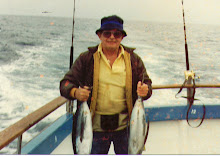 This is my satellite dish, and while it is showing the result of icing, it certainly isn't severe. And contrary to claims of some "competing" forms of tv service, I have never lost my signal due to clouds, rain, lightning, snow, ice or the heartbreak of psoriasis.
This is my satellite dish, and while it is showing the result of icing, it certainly isn't severe. And contrary to claims of some "competing" forms of tv service, I have never lost my signal due to clouds, rain, lightning, snow, ice or the heartbreak of psoriasis.You see these dishes on almost every home in the area, since the alternative ain't much. The local cable company's top of the line, most expensive package consists of only 47 channels and does not include ESPN2. That is tantamount to heresy. How is a man supposed to be whole without ESPN2?
 Since I have no covered parking, my poor car must feel like I'm storing it in a food freezer. This morning I had to fill a plastic juice container with warm tap water and pour it in the cracks around the car door to get it open. It was frozen solid and wouldn't budge. My California friends who came from the midwest and the east can probably recall those glorious moments. I have a special "bra" that covers the windshield at night so that it doesn't ice up and force me to scrape, scrape, scrape. I have found that making products to help deal with the problems of automobile icing is a big business out here. I have also found out that most of those products don't work very well. Warm tap water worked great, but the special aerosol spray I bought to "guarantee" that the doors would not freeze shut was a piece of crud. Ah, well.
Since I have no covered parking, my poor car must feel like I'm storing it in a food freezer. This morning I had to fill a plastic juice container with warm tap water and pour it in the cracks around the car door to get it open. It was frozen solid and wouldn't budge. My California friends who came from the midwest and the east can probably recall those glorious moments. I have a special "bra" that covers the windshield at night so that it doesn't ice up and force me to scrape, scrape, scrape. I have found that making products to help deal with the problems of automobile icing is a big business out here. I have also found out that most of those products don't work very well. Warm tap water worked great, but the special aerosol spray I bought to "guarantee" that the doors would not freeze shut was a piece of crud. Ah, well. There will always be something magical to me about white snow covering a neighborhood scene. I took this picture while standing in my front door at noon today. The high temp is going to be 22 degrees F, and the low tonight will be approximately 6-8 degrees F. I won't notice most of it at all since I will be comfortably housed on my couch this afternoon reading a book and sipping a cup of hot chocolate topped with those little marshmallows. Now, that's how cold weather should be experienced.
There will always be something magical to me about white snow covering a neighborhood scene. I took this picture while standing in my front door at noon today. The high temp is going to be 22 degrees F, and the low tonight will be approximately 6-8 degrees F. I won't notice most of it at all since I will be comfortably housed on my couch this afternoon reading a book and sipping a cup of hot chocolate topped with those little marshmallows. Now, that's how cold weather should be experienced.  Looking down the street in the other direction produces the same sort of scene. The snow is about six to eight inches deep on the lawns and walkways, but has certainly been flattened on the street by passing cars. I am gaining a certain amount of expertise in navigating in the snow and ice. Mostly, it calls for slower speeds and common sense. Of course, every region has it's share of yo-yos who simply don't understand concepts like caution when driving in poor road conditions.
Looking down the street in the other direction produces the same sort of scene. The snow is about six to eight inches deep on the lawns and walkways, but has certainly been flattened on the street by passing cars. I am gaining a certain amount of expertise in navigating in the snow and ice. Mostly, it calls for slower speeds and common sense. Of course, every region has it's share of yo-yos who simply don't understand concepts like caution when driving in poor road conditions. Does the cold upset or discourage me about the move from California. Not one bit. I have been in Nebraska when it was bitterly cold (-38 wind chill temp) and I spent a year in Greenland in the army where wind chill was not required for it to get to -38 or lower. The saying is true: "There is no such thing as weather that is too cold - there is only inadequate clothing." I have invested in some pretty warm clothing and footgear and I have to say that it makes being outdoors in cold weather tolerable. Of course, I would love for it to be Spring so I could be relaxing on the bank of the lake with a line in the water, but I accept that Winter is a necessary part of this earth's rhythm.
Life is pretty good, regardless of the forecast.



































